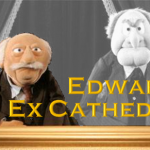Objective and strategy
The fund seeks long term capital growth through investing in what they deem to be 30 highly innovative, reasonably valued, companies from around the globe. They take an eclectic approach to identifying global innovators. They read widely (for example Fast Company and MIT’s Technology Review, as well as reports from the Boston Consulting Group and Thomson Reuters) and maintain ongoing conversations with folks in a variety of industries. That leads them to identify a manageable set of themes (from artificial intelligence to clean energy) which seem to be driving global innovation. They then identify companies substantially exposed to those themes (about 1000), then weed out the financially challenged (taking the list down to 500). Having identified a potential addition to the portfolio, they also have to convince themselves that it has more upside than anyone currently in the portfolio (since there’s a one-in-one-out discipline) and that it’s selling at a substantial discount to fair value (typically about one standard deviation below its 10 year average). They rebalance about quarterly to maintain roughly equally weighted positions in all thirty, but the rebalance is not purely mechanical. They try to keep the weights “reasonably in line” but are aware of the importance of minimizing trading costs and tax burdens. The fund stays fully invested.
Adviser
Guinness Atkinson Asset Management. The firm started in 1993 as the US arm of Guinness Flight Global Asset Management and their first American funds were Guinness Flight China and Hong Kong (1994) and Asia Focus (1996). Guinness Flight was acquired by Investec, then Tim Guinness and Jim Atkinson’s acquired Investec’s US funds business to form Guinness Atkinson. Their London-based sister company is Guinness Asset Management which runs European funds that parallel the U.S. ones. They have $1.6 billion in assets under management and advises funds in both the US and Europe.
Managers
Matthew Page and Ian Mortimer. Mr. Page joined GA in 2005 and working for Goldman Sachs. He earned an M.A. from Oxford in 2004. Dr. Mortimer joined GA in 2006. Prior to joining GA, he completed a doctorate in experimental physics at the University of Oxford. They are assisted by two analysts. The team manages $930 million in total, including Dividend Builder Fund (GAINX) and the Dublin-based versions of both funds.
Strategy capacity and closure
Approximately $5 billion. The current estimate of strategy capacity was generated by a simple calculation: 30 times the amount they might legally and prudently own of the smallest stock in their universe. The strategy, including its Dublin-based version, holds about $390 million.
Active share
93. “Active share” measures the degree to which a fund’s portfolio differs from the holdings of its benchmark portfolio. High active share indicates management which is providing a portfolio that is substantially different from, and independent of, the index. An active share of zero indicates perfect overlap with the index, 100 indicates perfect independence. The active share for Global Innovators is 93, which reflects a very high level of independence from its benchmark MSCI World Index.
Management’s stake in the fund
The managers are not invested in the fund because it’s only open to U.S. residents. They report being heavily invested in the European version of the strategy.
Opening date
Good question! The fund launched as the Wired 40 Index on December 15, 1998. It performed splendidly. It became the actively managed Global Innovators Fund on April 1, 2003 under the direction of Edmund Harriss and Tim Guinness. It performed splendidly. The current team came onboard in May 2010 (Page) and May 2011 (Mortimer) and tweaked the process, after which it again performed splendidly.
Minimum investment
$5,000, reduced to $1,000 for IRAs and just $250 for accounts established with an automatic investment plan. The minimum for the Institutional share class (GINNX) is $100,000.
Expense ratio
1.24%(Investor class) and 0.99%(Institutional class) on assets of about $163.8 million, as of July 2023.
Comments
Let’s start with the obvious and work backward from there.
The obvious: Global Innovators has outstanding (consistently outstanding, enduringly outstanding) returns. Here’s the fund’s rank for total and risk-adjusted (measured by Sharpe ratio) returns against its Lipper Global Large Cap Growth group:
| Total returns | Risk-adjusted returns | |
| One year rank | #4 of 34 funds, as of 02/2018 | #1 |
| Three year rank | #3 of 29 | #6 |
| Five year rank | #1 of 23 | #1 |
| Ten year rank | #1 of 15 | #2 |
Morningstar, using a different peer group, places it in the top 1 – 5% of US Large Blend funds for the past 1, 3, 5 and 10 year periods (as of 03/29/2018). That’s particularly impressive given the fact that IWIRX is succeeding against a domestic peer group (the average peer has 3% foreign) with a portfolio is that heavily invested overseas (40%) at a time when domestic stocks (8.6% annually over the past ten years) have a strong performance advantage over their international peers (5.8% annually in the same period). They should not be thriving given those disadvantages, and yet they are.
Growth of a $10,000 investment, 3/31/2008 to 3/30/2018
| Guinness Atkinson Global Innovators | $28,209 |
| Morningstar Large Blend peer group | 21,587 |
| Morningstar World Stock peer group | 17,328 |
per Morningstar.com, returns before taxes, accessed 3/31/2018
But why?
Good academic research, stretching back decades (for example, Paul A. Geroski, Innovation and Competitive Advantage, 1995), shows that firms with a strong commitment to ongoing innovation outperform the market. Firms with a minimal commitment to innovation trail the market, at least over longer periods. Joseph Schumpeter (1942) offered a clear and memorable explanation:
The essential point to grasp is that in dealing with capitalism we are dealing with an evolutionary process. … Capitalism, then, is by its nature a form or method of economic change and not only never is but never can be stationary.
The fundamental impulse that sets and keeps the capitalist engine in motion comes from the new consumers’ goods, the new methods of production or transportation, the new markets, the new forms of industrial organization that capitalist enterprise creates. …
[t]he … process of industrial mutation … incessantly revolutionizes the economic structure from within, incessantly destroying the old one, incessantly creating a new one. This process of Creative Destruction is the essential fact about capitalism. It is what capitalism consists in and what every capitalist concern has got to live in.
Every firm and every strategy, he argues, “must be seen in its role in the perennial gale of creative destruction.”
The challenge is finding such firms and resisting the temptation to overpay for them. The fund initially (1998-2003) tracked an index of 40 stocks chosen by the editors of Wired magazine “to mirror the arc of the new economy as it emerges from the heart of the late industrial age.” In 2003, Guinness concluded that a more focused portfolio and more active selection process would do better, and they were right. In 2010, the new team inherited the fund. They maintained its historic philosophy and construction but broadened its investable universe. Fifteen years ago there were only about 80 stocks that qualified for consideration; today it’s closer to 500 than their “slightly more robust identification process” has them track.
This is not a collection of “story stocks.” They look for firms that are continually reinventing themselves and looking for better ways to address the opportunities and challenges in their industry and in the global economy. While that might describe Google / Alphabet, it might also describe a major manufacturer of tires (Continental AG) or an innovative conglomerate whoses businesses find new ways “diagnose, treat and prevent disease” dental diseases and finds new ways to provide clean drinking water for tens of millions of people (Danaher Corporation). The key is to find firms which will produce disproportionately high returns on invested capital in the decade ahead and which are not themselves capital intensive or deeply in debt, not stocks that everyone is talking about.
Then they need to avoid overpaying for them. The managers note that many of the firms on their watchlist, their potential acquisitions, sell at “extortionate valuations.” Their strategy is to wait the required 12 – 36 months until they finally disappoint the crowd’s manic expectations. There’s a stampede for the door, the stocks overshoot – sometimes dramatically – on the downside and the guys move in.
Their purchases are conditioned by two criteria. First, they look for valuations at least one standard deviation below a firm’s ten year average (which is to say, they wait for a margin of safety). Second, they maintain a one-in-one-out discipline. For any firm to enter the portfolio, they have to be willing to entirely eliminate their position in another stock. They turn the portfolio over about once every three years. They continue tracking the stocks they sell since they remain potential re-entrants to the portfolio. They note that “The switches to the portfolio over the past 3.5 – 4 years have, on average, done well. The additions have outperformed the dropped stocks, on a sales basis, by about 25% per stock.”
An analysis of the fund’s 2017 year-end portfolio shows the way this discipline plays out.
Their firms spent a lot more on R&D than their peers (7.8% versus 6.0% of sales revenue) but a lot less (7.5% versus 9.0%) on capital goods.
Their firms have a lot higher return-on-investment than peers (16% versus 12% CFROI).
Their firms are growing a lot faster (12.6% versus 4.4% sales growth, 12% versus 9.6% earnings growth) than their peers, but cost only a little bit more (17.5 p/e versus 17.2 p/e).
The fund tends to be a bit more volatile but a lot more profitable than its peers. Several structural aspects of the portfolio contribute to the asymmetry: they rebalance frequently to trim winners; they have a one-in-one-out discipline which means they’re constantly pressured to eliminate their weakest names; they limit position size, avoid debt-ridden firms and invest in areas that are strongly buoyant. That is, the firms are involved in areas where there is a huge long-term impetus which allows them to recover quickly from short-term setbacks.
Bottom Line
While we need to mechanically and truthfully repeat the “past performance is not indicative of future results” mantra, Global Innovator’s premise and record might give us some pause. Its strategy is grounded in a serious and sustained line of academic research. Its discipline is pursued by few others. Its results have been consistent across 20 years and three sets of managers. This is not a low volatility strategy, but it has proven to be a highly resilient one. Over the past decade, its maximum drawdown was slightly higher than its peers (50.1% versus 47.6%) but its rebound was far faster and stronger. Investors willing to tolerate the slightly-elevated volatility of a fully invested, modestly pricey equity portfolio, Global Innovators really does command careful attention.











